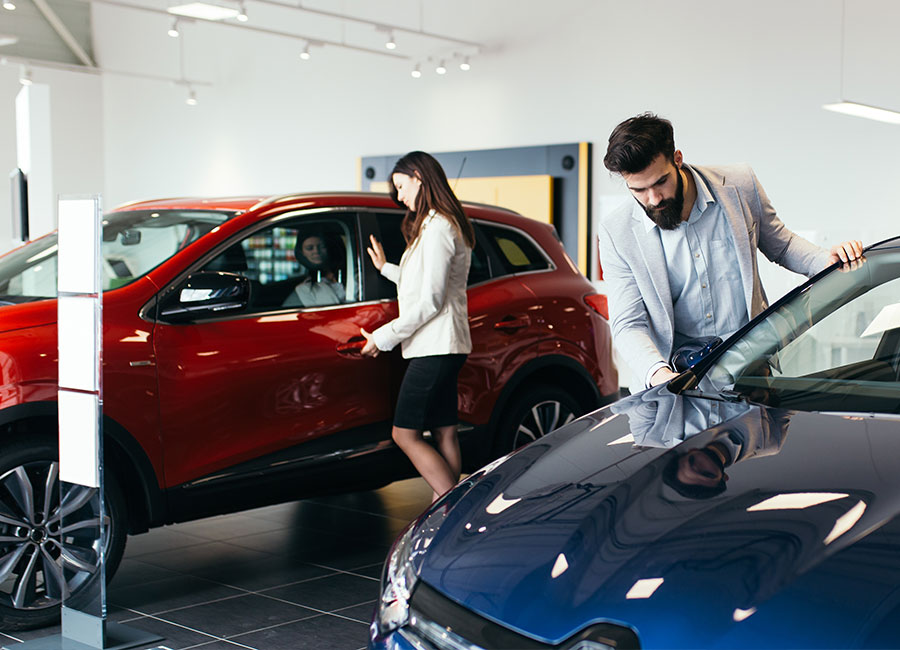
Glenn Mercer
WHILE doomsayers predict a dismantling of the dealership business model wrought by vehicle electrification, autonomy and the rise of mobility as a service, a number of speakers presenting at this week’s Australian Automotive Dealer Association (AADA) National Dealer Convention pointed out how many previous predictions of a post-dealership era had never come to pass.
Several pointed out that a dramatic decline in footfall at showrooms since 2010 had been accompanied by a 10 per cent increase in annual sales volumes in the same timeframe.
Ohio-based independent automotive consultant Glenn Mercer presented an update on the findings of the National Automobile Dealers Association (NADA) Dealership of Tomorrow: 2025 report published in 2016.
He pointed to predictions by respected organisations and publications such as Wards and Automotive News in the late 1980s and early 1990s that all proved incorrect. The predictions included multi-brand showroom floors, holographic test-drives and build-to-order sales surpassing sales made from inventory.
“Frankly, our industry – at least in the United States – has a very bad forecasting record. All our forecasting of change has been wrong,” he said. “Looking at the historical record, I have to put a huge grain – a pound – of salt with forecasts of rapid change.”
This was echoed by JD Power vice-president for South Asia, ASEAN and Oceania Darren Slind.

“We would argue that rumours of the death of the dealer have been greatly exaggerated,” he said.
“The market underestimates the strength of the dealer/customer relationship … and frankly also underestimates the entrepreneurial instincts of dealers to adapt and innovate.”
It was a similar story during the presentation by Deloitte Private director Karen Spear.
“This whole fear that sometimes comes out or you hear in the media that the dealership is dead is not a point of view that we at Deloitte have, and talking to all the OEMs we deal with, they all see a role for the dealership in the future,” she said.
However, some predictions were coming to pass, particularly in mature markets such as Australia where large dealership groups were on the rise and smaller family-owned businesses could only really grow their volume and profits by expansion and acquisition.

Darren Slind
“We’re seeing the rise of dealer groups across the world, especially in developed markets like Australia, Canada, the United States and others where they are looking for scale, and frankly achieving it in a way that some of the smaller family-run businesses are struggling to manage,” said Mr Slind.
Mr Mercer said his forecasted consolidation from 8000 dealerships across the US to 6500 by 2025 was expected to prove accurate, driven by the trend towards larger dealerships making it more difficult for senior managers to buy their employers’ business plus pressure from manufacturers to invest in creating palatial showrooms he described as “garage mahal”.
But declines in service revenue caused by uptake of electric vehicles was not shaping to be as sharp as predicted, said Mr Mercer, citing the real-world workshop revenue from a Nissan Leaf being 60 per cent of an Altima rather than the 10 per cent figure once bandied about.
He also said that, while the proliferation of safety assist technologies had reduced the frequency of collisions, the replacement and recalibration of high-cost, high-margin sensors and modules had upped the profitability of repairs to crash-damaged vehicles.
More good news from Mr Mercer’s presentation was the trend to higher transaction prices while volumes remained relatively stagnant, maturing millennials becoming the second-largest car-buying age group and increased urbanisation causing the average number of kilometres travelled to climb.
The opportunity to sell autonomous cars to elderly and disabled customers was something to look forward to, according to Mr Mercer, who was unconcerned by predictions about ride-sharing and other services diluting the new car market.

He pointed out that 85 per cent of ride-sharing journeys were for a single passenger and that new vehicle registrations in the US had grown faster than the population – even in the San Francisco area that he described as “ground zero for mobility services”.
Mr Mercer backed up his claim with data showing the number of people carpooling in the United States had dropped by 2.29 million between 2000 and 2015 while 16.47m more people were commuting solo.
“We don’t like carpooling, so why would we like to do it when it becomes an app? We’ll see,” he said.

Karen Spear
That said, Mr Slind recommended dealers prepare to evolve their business model from individual vehicle sales to generating revenue per kilometre travelled by those vehicles.
“A passenger vehicle as an asset is perhaps one of the least-utilised assets on Earth,” he said. “The average vehicle, at least in North American statistics I have seen, is that it sits unused something like 92-93 per cent of the time. It’s sitting idle.”
The opportunity, according to Mr Slind, was that increased asset utilisation could reduce the cost-per-kilometre to an extent that more people would be able to access new cars and related services provided by dealerships.
“We think it’s the beginning of a shift and an evolution, and you should be looking proactively at how you can capitalise on that while maintaining your existing business with the understanding that it will evolve over time,” he said.
“Dealers must do what you have always done: Adapt and innovate.”
Mr Mercer agreed.
“One thing you people (dealers) do, because you’ve been around for a century and a quarter, is that you adapt,” he said.
“I’m quite convinced that if direct sales models start looking attractive to consumers, you will figure out a way of providing that experience.”
By Haitham Razagui













 Read More: Related articles
Read More: Related articles

